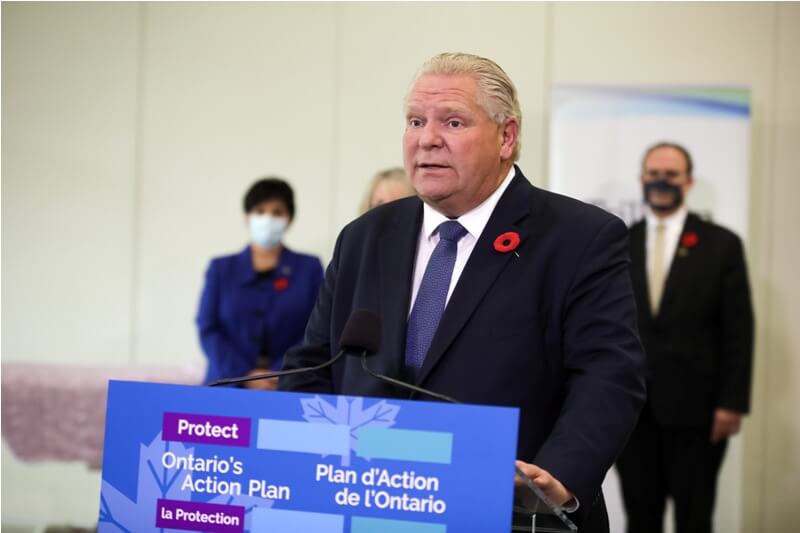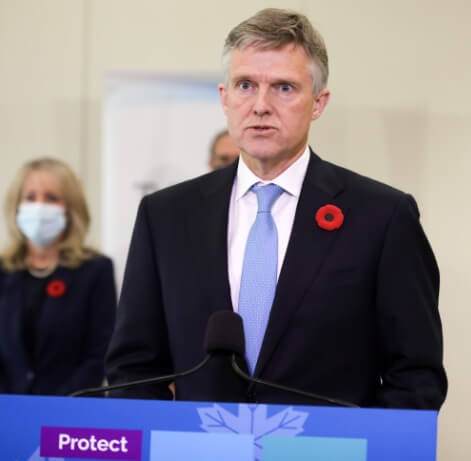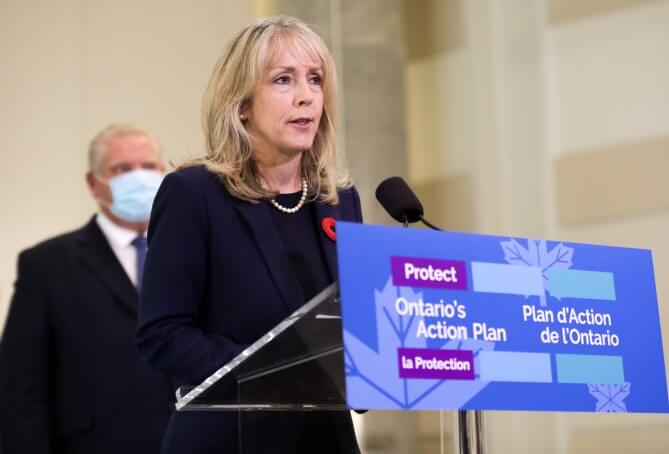Ontario Increasing Direct Care for Long-Term Care Residents to Four Hours per Day
New Commitment Will Make Ontario the Canadian Leader in Quality of Care for Seniors
The Voice of Canada News:
The Ontario government is increasing the hours of direct care for each long-term care resident to an average of four hours per day. This commitment will make Ontario the leader among Canadian provinces in the provision of care for long-term care residents. The announcement was made in advance of the release of Ontario’s 2020 Budget on November 5, 2020.
Details were provided by Premier Doug Ford, Rod Phillips, Minister of Finance, and Merrilee Fullerton, Minister of Long-Term Care, at Trillium Health Partners in Mississauga.
“I made a promise to long-term care residents, their families and their caregivers that we would deliver better care for our seniors,” said Premier Ford. “We are delivering on that promise and acting on the early recommendations of Ontario’s Long-Term Care COVID-19 Commission. By increasing the hours of daily direct care for residents, we will improve their quality of life and ensure they are more comfortable and safe.”
This new commitment to improve quality of care includes:
- Average daily direct care of four hours a day per resident. Direct hands-on care is provided by nurses or personal support workers to support individual clinical and personal care needs.
- Hard targets set over the next four years to achieve this standard by 2024-25. Progress against these targets will be measured and reported regularly.
- Unprecedented changes to educate and recruit the tens of thousands of new personal support workers, registered practical nurses and registered nurses that will be required. As part of the province’s COVID-19 Fall Preparedness Plan, the province is taking the first step by recruiting an additional 3,700 frontline workers for its health workforce.
“On Thursday, I’ll introduce Ontario’s 2020 Budget, the next phase of Ontario’s Action Plan,” said Minister Phillips. “It is a plan that will have three pillars. The first is protect, making good on Premier Ford’s commitment to do whatever it takes to get through the pandemic. Making Ontario the leader among Canadian provinces in terms of care for our loved ones is a vital part of the protect pillar and reflects our government’s top priority ― ensuring the health of people as we continue to respond to COVID-19.”
The government will work in collaboration with its partners, including labour, education and training providers, as well as sector leaders, to deliver the significant changes to the long-term care sector required to deliver on its four hour per day commitment.
“Improving the quality of life and care for long-term care residents is at the centre of everything we do. And after decades of neglect by successive governments we will work with our partners and with leadership in the sector to transform how we care for our loved ones for generations to come,” said Minister Fullerton. “Although we will continue to make progress, these changes will not happen overnight, as we have to hire and train a great number of staff and build modern new facilities so our residents get the level of care they deserve.”
The increase in average daily hours of care builds on supports recently announced for long-term care, including investing $1.75 billion over five years to increase long-term care capacity and spaces for seniors, as well as the government’s commitment to build 30,000 new long-term care beds over 10 years. The government is also driving the development of new long-term care homes through the Accelerated Build Pilot Program, adding 1,280 beds by early 2022.
The government will release Ontario’s 2020 Budget on November 5, 2020. The next phase of Ontario’s Action Plan, Ontario’s 2020 Budget will focus on protecting and supporting people and employers during the COVID-19 pandemic while laying the foundation for the province’s economic recovery.
Quick Facts
- Ontario’s long-term care homes employ over 100,000 staff across the province.
- The province has announced $540 million to prepare long-term care homes for future waves of COVID-19, helping homes enhance infection prevention and control, support adequate staffing and manage operating costs.
- The government announced $243 million in emergency funding for staffing, supplies and capacity, and $78.2 million to preserve frontline staff and maintain current levels of service provided for resident care and accommodation.
- The government is providing a temporary wage increase effective October 1, 2020 to over 147,000 workers who deliver publicly funded personal support services, including an increase of $3 per hour for approximately 50,000 eligible personal support workers in long-term care.






